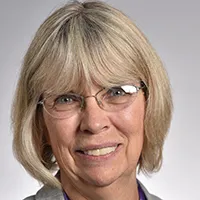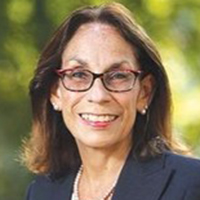How one hospital relied on sound business and finance processes as the foundation of its cultural transformation initiative
- A key to the success of Bergen New Bridge Medical Center’s cultural transformation over the last several years was a focus on business and finance strategy.
- The budgetary process was overhauled to establish greater accountability within departments.
- Transparency in new spending initiatives has been a big emphasis.
A cultural transformation can significantly enhance a healthcare organization’s operations, but only if it’s supported by sound business and finance practices.
That’s a key takeaway from the experience over the last few years of Bergen New Bridge Medical Center, two leaders with the Paramus, New Jersey-based organization said in August.
“When we talk about transformation, it’s easy to talk about culture and all of the soft costs, but there are real costs to transforming an organization,” said Barbara Piascik, chief compliance officer for Bergen New Bridge Medical Center, the largest hospital in New Jersey by number of beds (1,070).
“If we can’t make the budget and put budget and finance checks in place, we’re not going to be able to continue the journey,” she added.
Piascik and Deborah Visconi, president and CEO, presented on the organization’s cultural transformation during HFMA’s 2020 Digital Annual Conference.

Barbara Piascik

Deborah Visconi
Making big changes for the benefit of the community
Bergen New Bridge Medical Center sought to transform its operations starting in 2018. The goal was to support the organization’s mission to provide its community with high-quality, compassionate, accessible care.
Along with adding new service lines and procedure types in response to community feedback, leadership focused on the following areas. Most brought significant costs.
Equipment upgrades. These included improvements to IT, lab and radiology.
Facility improvements. The organization sought a facility overhaul and redesign that would allow for an optimal patient experience.
Staffing turnover and new positions. One new position is a director of patient experience who works with patients, families and staff to address concerns. Staff training has focused on learning to take a patient’s view.
Rebranding and marketing efforts. Platforms such as social media channels are used to communicate how Bergen New Bridge Medical Center is addressing the community’s needs.
Contract renegotiations. In one of the biggest changes, the organization expanded its payer mix from only Medicare and Medicaid fee for service. Today, 98% of residents are covered for care at Bergen New Bridge Medical Center, Piascik said.
That change was a huge piece of the overall transformation, requiring a new infrastructure to handle processes such as eligibility, authorizations, denials and appeals. “We had to invest in a continuum-of-care department and a denial management workflow and system,” Visconi said. “Those are the types of business decisions and investments we had to make.”
Overhauling the budget process to support transformation
Before embarking on the cultural transformation in 2018, Bergen New Bridge Medical Center had a rudimentary budget process. It involved a couple of people and did not use departmental input.
“If you don’t have buy-in and you don’t have an understanding, budgets become lines on paper and they don’t become operational things that we do,” Piascik said.
Leaders worked to build a department-oriented budget process. They developed training and education for department heads on variance reporting “and gaining accountability and participation in hospital finances,” Piascik said.
“The finance team has done a tremendous job for departments that really were like, ‘I have no idea. I don’t know how to do a budget,’” she added.
Much of the education process involves the basic importance of adhering to a budget.
“If you have a dramatic variance that you can’t explain, very often internal audit needs to step in and find out what happened,” Piascik said. “And sometimes you can find things that maybe aren’t being charged correctly or [that] there’s an issue with. So this is a huge piece of what we’ve done — the transparency of understanding where the money is being spent, how it’s being spent and how you are affected by that.”
Piascik said Visconi often asks her whether the hospital is making money on a new program. “We can do an internal audit and find out what’s working and what isn’t, and I hope that’s valuable feedback for leadership.”





